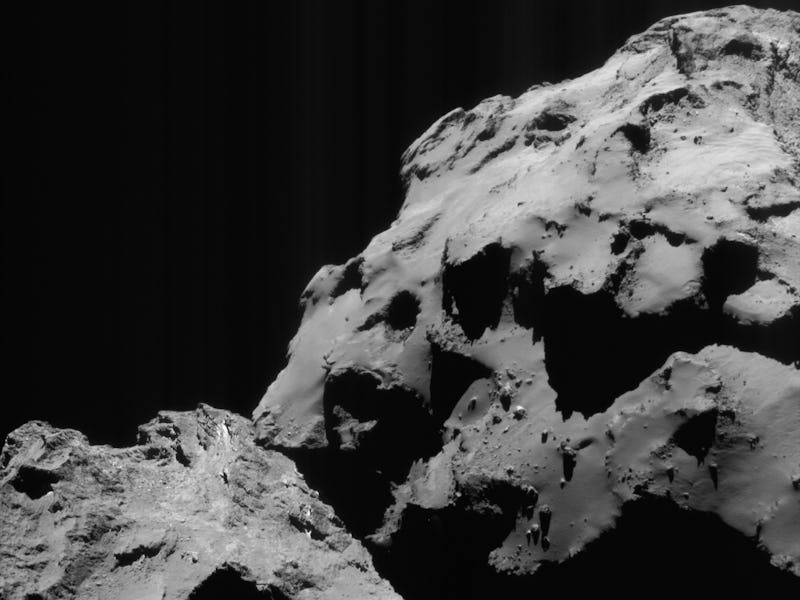A Year After the Philae Lander Woke Up, Its Rosetta Mothership Remains Glitchy
Rosetta spacecraft recently had a "dramatic weekend."

One year ago today, the Philae lander broke its seven-month silence, much to the relief of European Space Agency engineers, who thought they might have landed a system on comet 67P, a Jupiter-family comet from the Kuiper Belt, to no particular end. That’s what it looked like starting in November 2014, when the robotic lander entered “safe mode” — essentially a state of hibernation — due to a low battery. It took until June 13, 2015, for it to recharge enough to communicate with ground control for three weeks before, again, passing out of contact. It’s been a year now and the lander has remained so glitchy that the ESA has moved on, focusing on other parts of the Rosetta cometary mission, a mission that has been plagued by other sorts of communications issues.
The ESA spacecraft apparently had what an operations manager referred to as an “extremely dramatic weekend” earlier this month when ground control inexplicably lost contact with Rosetta for almost a full day. Its silence was due to the same safe mode hibernation status that Philae entered more than a year ago. While hibernating like this, a spacecraft shuts off its instrument features — camera, radar, etc — sort of like when your phone enters low-battery mode. According to Phys.org, a similar “dust-related mishap” also occurred in April 2015, so Philae and Rosetta now share a reputation for flaking out.
Still, the ESA recently revealed that the data Rosetta has gathered from comet 67P indicates the presence of the amino acid glycine, a key building block for Earth-like DNA and cell membranes. This means Rosetta is playing a key role in our understanding of how comets delivered water and crucial organic molecules to Earth.
“This is the first unambiguous detection of glycine at a comet,” said Kathrin Altwegg, principal investigator of the ROSINA instrument that made the measurements, and lead author of the corresponding Science Advances paper, according to the ESA. “At the same time, we also detected certain other organic molecules that can be precursors to glycine, hinting at the possible ways in which it may have formed.”
The original plan called for the mission to be over when 67p was on its way out of the solar system. But nothing about this mission has — for better and worse — gone according to plan.